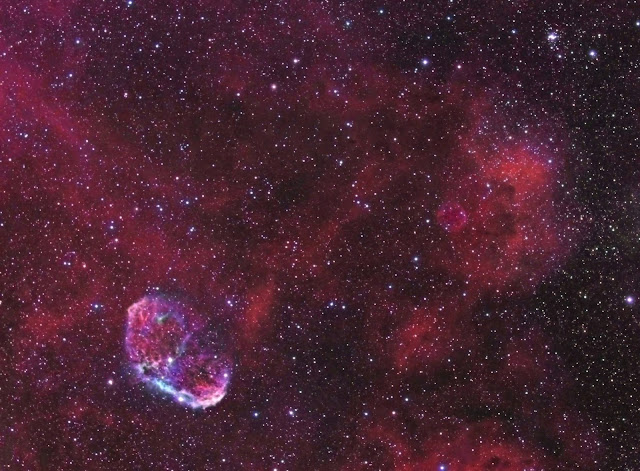NGC2024 and B33. The Horsehead and Flame nebulae. I took this image on four separate evenings under very clear sky conditions stars were visible down to magnitude 5.2. The total exposure times were 30 minutes using a blue filter, 45 minutes using an S11 filter, 65 minutes using an O111 filter and six hours using a H Alpha filter. I captured five minute sub frames with matching dark frames and combined them with flat field frames to reduce the effect of vignetting in the final image. The telescope I was using was a 4 inch f/6.3 refractor, with a Vixen Atlux mount, PHD auto guiding, A set of Astronomik narrowband, RGB filters and an Atik 383L mono CCD camera.
Hubble palette
Hubble palette + RGB colour
RGB colour, narrowband luminance
Final composition
















